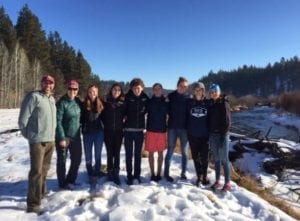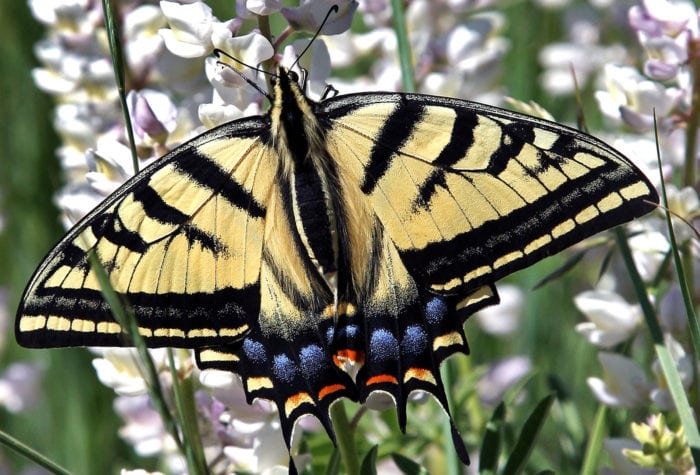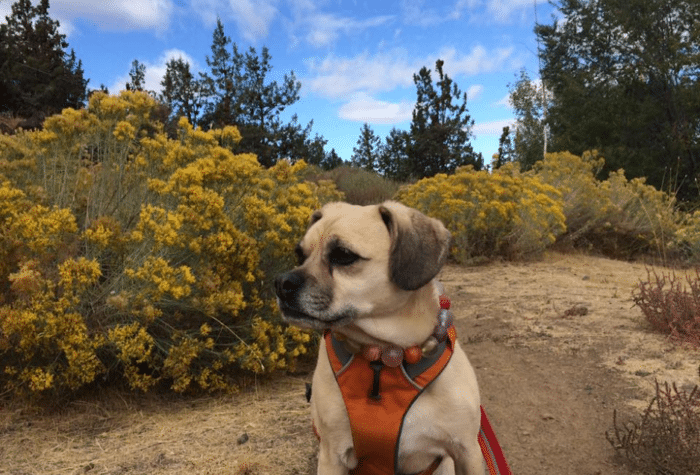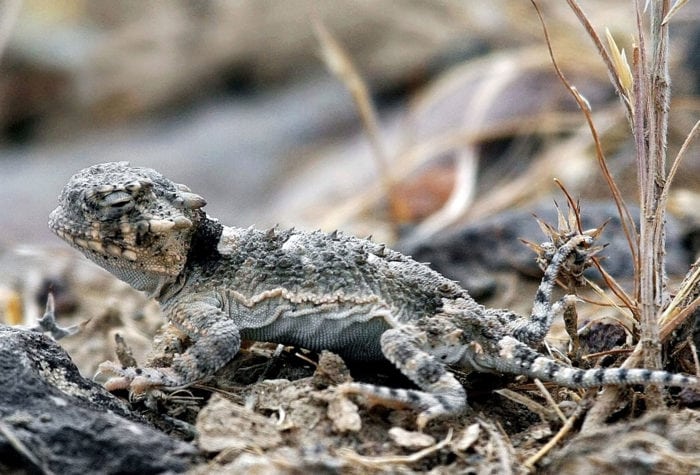The following Wild and Scenic River nomination was written by the Bend Senior High School Environmental Club.
Whychus Creek: a Nomination as a Wild and Scenic River
We rely on our watershed. It provides unique habitat, gorgeous scenery, historical connections, and gives life to the towns and cities of Oregon. In order for Oregon to continue to thrive with vibrant energy and life we must prioritize our water. As an activist and representative of the bend high environmental club, we would like to thank Ron Wyden for designating new wild and scenic rivers to protect the Oregon we know and love.
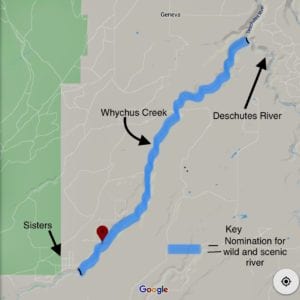 For our designation, we choose the section of Whychus creek that stretches from Sisters to the Deschutes. A section of Whychus Creek near sisters called camp Polk meadow has undergone a stunning riparian restoration led by Deschutes Land Trust partnered with the Upper Deschutes Watershed Council. The restoration has returned the river to its natural winding state, brought back willow trees and native shrubs, increased macroinvertebrate counts, and even witnessed some steelhead returning to the region along with other species.
For our designation, we choose the section of Whychus creek that stretches from Sisters to the Deschutes. A section of Whychus Creek near sisters called camp Polk meadow has undergone a stunning riparian restoration led by Deschutes Land Trust partnered with the Upper Deschutes Watershed Council. The restoration has returned the river to its natural winding state, brought back willow trees and native shrubs, increased macroinvertebrate counts, and even witnessed some steelhead returning to the region along with other species.
Ideally, we would like to see the rest of Whychus Creek undergo similar restoration projects. In order to determine the intrinsic values of Whychus Creek, representatives from our club met with City councilor and Deschutes land trust public lands coordinator Gena Goodman-Campbell and the education coordinator from the Deschutes watershed council, Kolleen Miller. We went to camp Polk meadow on the section of creek managed by Deschutes Land Trust. This particular meadow is the site of a major restoration project by local conservation groups. We were all amazed by the serenity and tranquility of camp Polk and hope future generations will be able to see camp Polk in the same pristine state that we were able to.
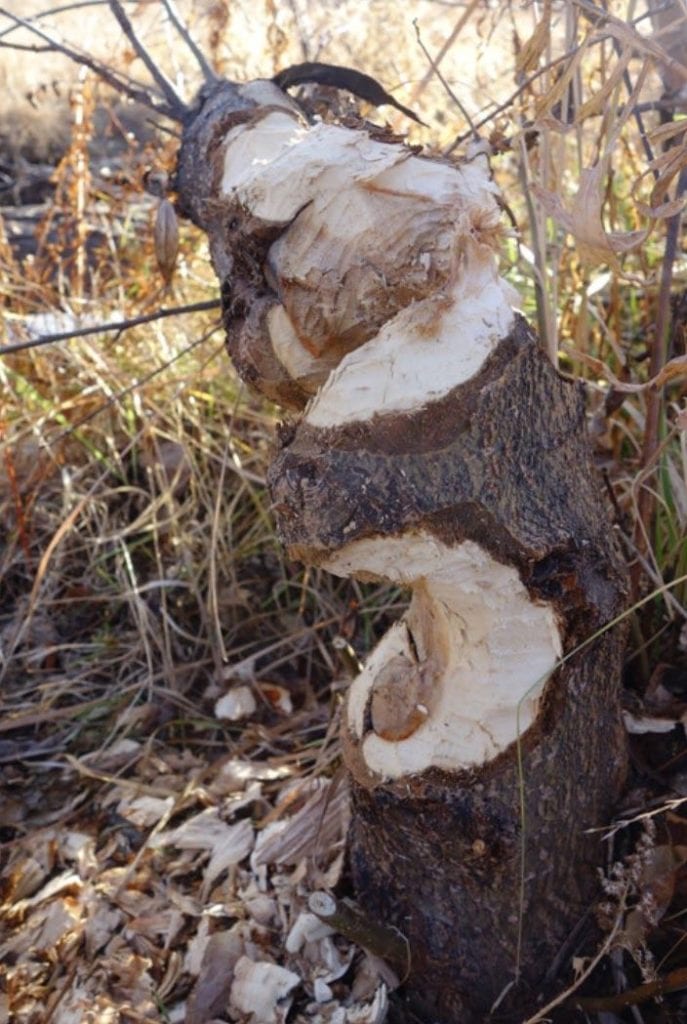 We value this river for its scientific benefit as a site of a relatively unique experiment that aims to replicate beaver dams in order to encourage the return of beavers to the region. We also want to protect the meandering state of the river and all the surrounding native plants within the boundaries of the river. I the river, we would like to see a healthy population of micro and macroinvertebrates. Finally, we would like to propose that the river always be capable of having enough water to allow for there to always be a continuous ample flow from Sisters to the Deschutes. The higher we can bring the volume of water in the river, creek will be able to more easily absorb heat and dispel cold without killing the residing fish and biotic factors of the stream.
We value this river for its scientific benefit as a site of a relatively unique experiment that aims to replicate beaver dams in order to encourage the return of beavers to the region. We also want to protect the meandering state of the river and all the surrounding native plants within the boundaries of the river. I the river, we would like to see a healthy population of micro and macroinvertebrates. Finally, we would like to propose that the river always be capable of having enough water to allow for there to always be a continuous ample flow from Sisters to the Deschutes. The higher we can bring the volume of water in the river, creek will be able to more easily absorb heat and dispel cold without killing the residing fish and biotic factors of the stream.
Another value of Whychus Creek is the community support and culture that it fosters. Thanks to Deschutes Land Trust and the hard work of people working in this outstanding organization, kids in our community of all ages are able to visit the creek to further their understanding and appreciation of the outdoors through the mediums of data collection, writing, art, and music. People are able to protect it by participating in restoring the forest, managing weeds, and restoring the stream. Through the community’s involvement, we have had the opportunity to watch the creek return to its glorious state and cultivate a sense of pride and ownership for all people involved.
It’s important to us that we respect the restoration work done on the Whychus by designating the section of Whychus Creek flowing from Sisters to the Deschutes as wild and scenic in order to protect the surrounding native plant species, support the beaver dam project, and to always allow for continuous flow of the river from Sisters to the Deschutes. The river has made a phenomenal come back. Now we must maintain the restoration that has been done by providing the protection of a wild and scenic river designation that the Whychus needs. The Bend Senior High Environmental Club, alongside city councilor Gena Goodman-Campbell, The Deschutes Land Trust, the Upper Deschutes Watershed Council, and many other community members support the nomination of Whychus Creek (from Sisters to the Deschutes) to be protected as a wild and scenic river. We hope that you will consider our nomination and thank you again for your dedication to the future of Oregon.
Outstandingly Remarkable Values:
- Surrounding Native Plant Species
- Natural Meander of the stream
- Beaver Dam project
- Micro- and macroinvertebrates in the water
Remarkable values:
- Community connection site for restoration projects
